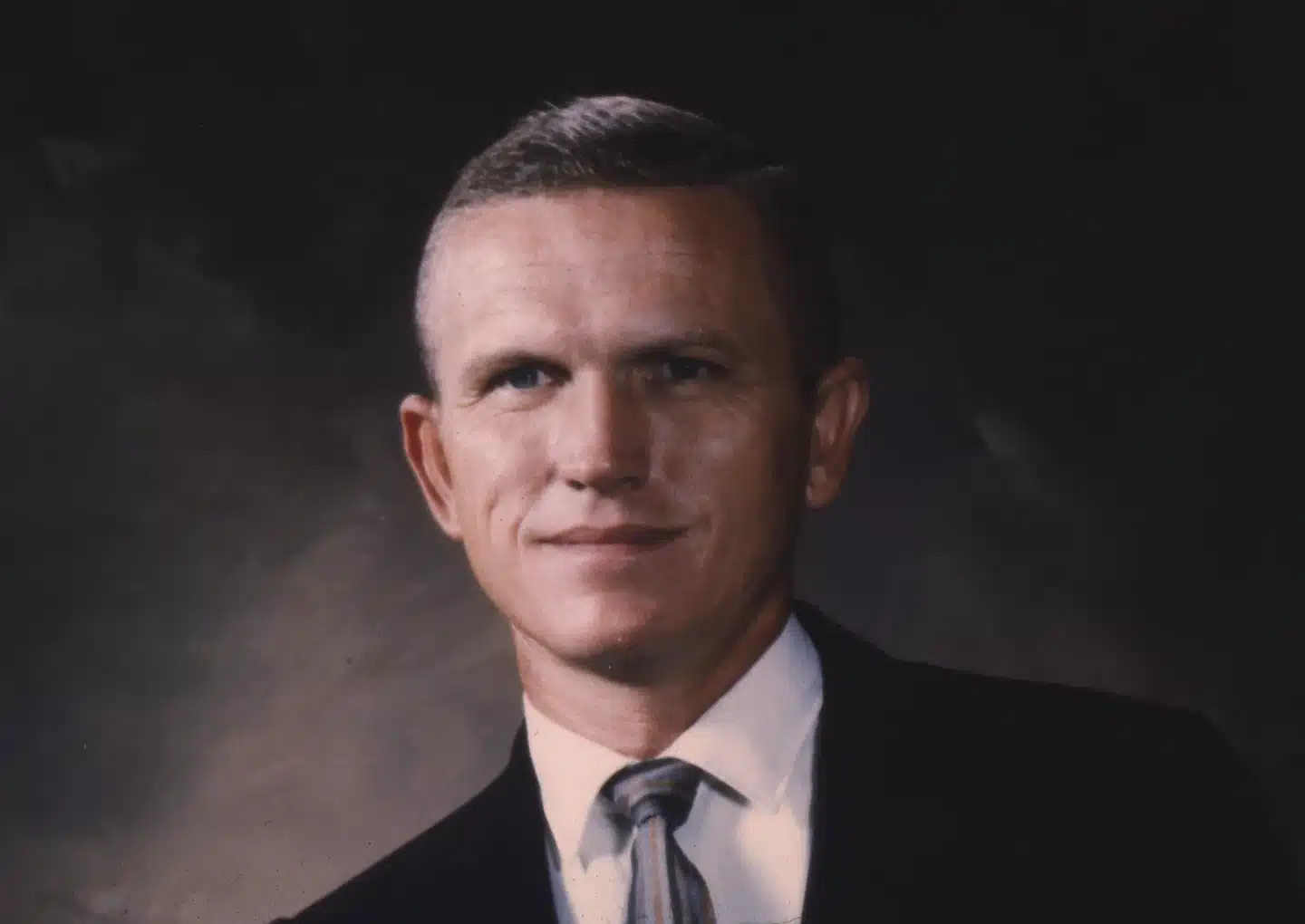Science
Astronaut Frank Borman, Commander Of The First Apollo Mission To The Moon, Has Died At Age 95

BILLINGS, Mont. — Frank Borman, the commanding officer of Apollo 8’s momentous Christmas 1968 journey that circled the moon ten times and cleared the stage for the lunar landing the following year, has died. He was 95.
According to NASA, Borman died on Tuesday in Billings, Montana.
Frank also commanded problematic Eastern Airlines after leaving the astronaut corps in the 1970s and early 1980s.
However, he was most known for his NASA responsibilities. He and his crewmates, James Lovell and William Anders, were the first to travel to the moon and glimpse Earth as a faraway sphere in space.
“Today, we honor one of NASA’s finest. In a statement Thursday, NASA Administrator Bill Nelson stated, “Astronaut Frank Borman was a true American hero.” “His lifelong love for aviation and exploration was only surpassed by his love for his wife, Susan.”
The Apollo 8 trio launched from Florida’s Cape Canaveral on December 21, 1968, and spent three days traveling to the moon before entering lunar orbit on Christmas Eve. They returned home on December 27 after circling 10 times on December 24-25.
Astronaut Frank Borman, Commander Of The First Apollo Mission To The Moon, Has Died At Age 95
In a live telecast from the orbiter on Christmas Eve, the astronauts read from the Book of Genesis: “In the beginning, God created the heaven and the earth.” And the ground was formless and empty, and darkness covered the face of the deep.”
Frank closed the show by saying, “And from the crew of Apollo 8, we close with good night, good luck, a Merry Christmas, and God bless all of you — all of you on the good Earth.”
Lovell and Borman had previously flown together during the two-week Gemini 7 mission, which launched on December 4, 1965, and achieved the first space orbital rendezvous with Gemini 6 at only 120 feet apart.
“Gemini was a tough go,” Borman admitted to The Associated Press in 1998. “It was no bigger than a Volkswagen bug’s front seat.” It gave Apollo the appearance of a super-duper, luxury touring bus.”
Astronaut Frank Borman, Commander Of The First Apollo Mission To The Moon, Has Died At Age 95
In his book, “Countdown: An Autobiography,” Frank stated that Apollo 8 was initially intended to orbit Earth. The success of Apollo 7’s mission in October 1968 to demonstrate system reliability on long-duration flights convinced NASA that it was time to try flying to the moon.
But, according to Frank, NASA modified its plans to beat the Russians. Borman stated that he believed one orbit would be sufficient.
“My main concern throughout the flight was getting there ahead of the Russians and getting home.” In my opinion, that was a big accomplishment,” Borman said during a 2017 appearance in Chicago.
Anders captured the iconic “Earthrise” photo of a blue and white Earth rising over the grey lunar terrain during the crew’s fourth orbit.
“We were the first humans to see the world in its majestic totality, an intensely emotional experience for each of us,” Borman wrote about how the Earth seemed from afar. We didn’t say anything to each other, but I was certain our thoughts were the same – of our family on that spinning globe. And perhaps we discussed another concept I had, “This has to be what God sees.”
Astronaut Frank Borman, Commander Of The First Apollo Mission To The Moon, Has Died At Age 95
Borman’s aviation career continued after NASA when he joined Eastern Airlines, the nation’s fourth-largest airline. He eventually became Eastern’s president and CEO, as well as its board chairman, in 1976.
During Borman’s tenure at Eastern, fuel prices skyrocketed, and the government deregulated the airline business. The airline became more unprofitable, in debt, and riven by labor strife. In 1986, he resigned and relocated to Las Cruces, New Mexico.
Borman claimed in his memoirs that his interest in flying began in his teens when he and his father would build model airplanes. Borman began flying lessons at 15, using money he had saved from working as a bag boy and pumping petrol after school. After eight hours of dual instruction, he took his first solo flight. He kept flying until his 90s.
Borman grew up in Tucson, Arizona, after being born in Gary, Indiana. He graduated from the United States Military Academy at West Point in 1950 with a bachelor of science degree. Borman married his high school girlfriend, Susan Bugbee, the same year. She passed away in 2021.
After graduating, Borman worked as a fighter pilot, operational pilot, and teacher at West Point. Borman and his family relocated to Pasadena, California, in 1956, where he earned a master’s degree in aeronautical engineering from the California Institute of Technology. He was one of nine test pilots chosen by NASA for the astronaut program in 1962.
President Jimmy Carter awarded him the Congressional Space Medal of Honour.
Borman and his son, Fred, established a cattle ranch in Bighorn, Montana 1998. He was survived by another son, Edwin, and their families, in addition to Fred.
SOURCE – (AP)































